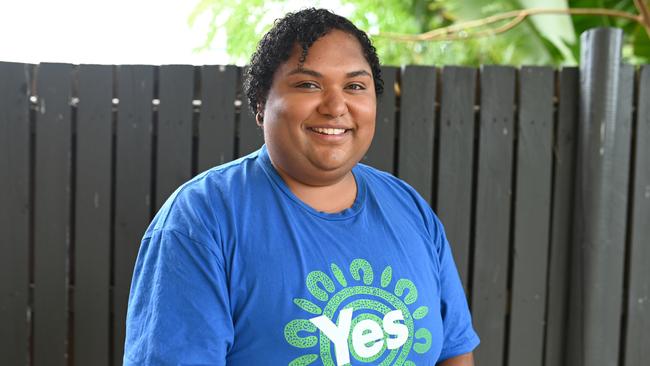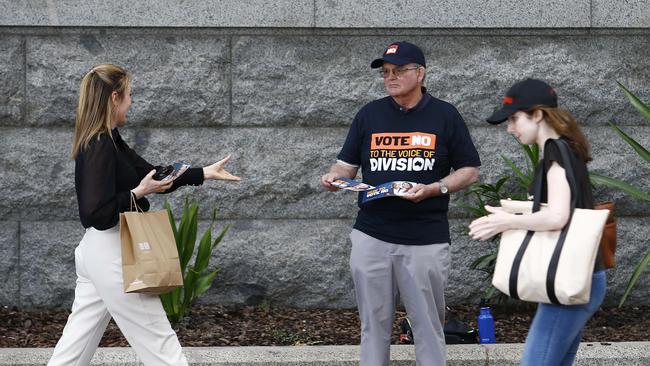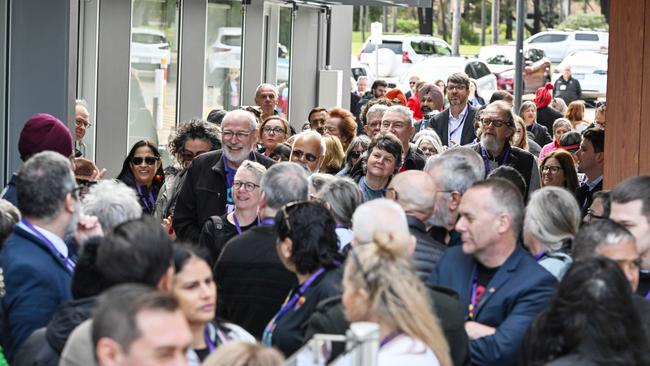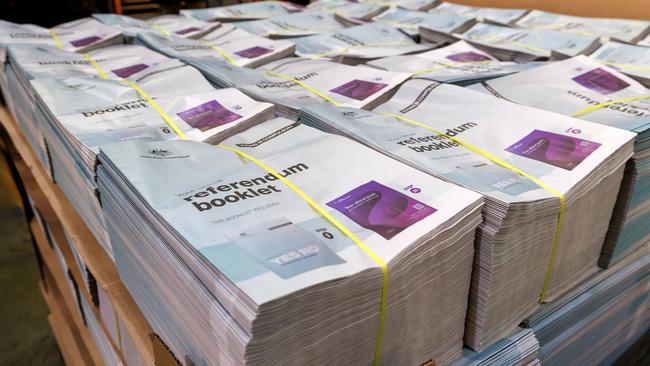What millions of Aussies can expect on referendum day
Australia’s first referendum since 1999 will break months of bitter debate over Indigenous rights and constitutional change - here’s what you need to know.
Sausage sizzles, colourful pamphlets and high tensions are expected when voters turn out to cast their ballots in the biggest electoral event in Australia’s history.
Millions of people will enter about 8000 polling stations on October 14 to vote on whether they wish to have a constitutionally enshrined Indigenous Voice to Parliament.
The historic event follows months of exhaustive campaigning and is expected to trigger a bucket of “mixed emotions”, according to Yes23 volunteer Stacee Ketchell.
“It’s been a long journey,” she said.
“We’re very pumped and ready to go, but we understand that the reality of this and there are opposing views, but not everyone has been respectful.”

Millions of Australians have cast early votes, with about 550 pre-poll booths across the nation open until Friday night.
According to Ms Ketchell, who has helped co-ordinate pro-Voice volunteer efforts in Far North Queensland, there has been a number of “outbursts” made against campaigners ranging from people yelling from their cars to confrontations on the street.
“There’s been a number of things said to us and most are not even worth repeating,” she told NCA NewsWire.
“But it’s actually being counteracted by the positive engagements that we’re having and when you walk in through the shopping centre with a shirt on, you get the thumbs up, you get the big smiles, so it makes it all worthwhile.”

On Saturday, October 14, local schools, churches and town halls will host voting centres, with polls open from 8am to 6pm.
Hundreds of cake stalls and barbecues, with volunteers selling “democracy sausages”, are expected to be displayed on a day that the Prime Minister has described as a “once in a generation” event.
Emotions could spill over given the highly charged nature of the national Voice debate, which has recorded an uptick in racism and discriminatory rhetoric towards First Nations people
Campaign volunteers have been urged to stay alert and have been offered online training to help navigate any unexpected incidents or altercations.
“We’ll have captains who will lead each booth and they will brief the volunteers, ensuring that their safety and wellbeing is our priority and that we have support for them,” Ms Ketchell said.

“We’ll be rostering on different people, and we’ve got mobs roaming around with water for our volunteers. It’s all our community coming together and it’s actually really powerful and will be good to see.”
There have been about 2 million postal vote applications made ahead of referendum day, and as of October 12, about 4 million people have voted at an early voting centre.
More Australians than ever are enrolled to vote, with 97.7 per cent of the eligible population or more than 17.5 million people set to cast ballots.
The highest-ever number of Indigenous people and youth voters will also have their say on October 14, with enrolments up by 94 and 91.4 per cent, respectively.

More than 7000 polling booths across the country will be manned by more than 100,000 temporary workers, including about 1000 volunteers from the Australian Electoral Commission (AEC).
AEC spokesman Evan Elkin-Smyth said he believed the “vast majority” of voters would act in a civil manner and behave respectfully on the big day.
“Our staff aren’t a police force, they are there to administer an important democratic process. They are members of the community – mum, dads, neighbours,” he said.
He said the voting body would be closely monitoring any risks of natural disasters impacting people’s ability to vote after dozens of bushfires were reported across NSW this week.
“At the moment we’ll be watching closely and we’ll pivot if we need to – obviously if something gets bad, people’s first priority is their safety,” he said.

About 125,000 Australians have already voted via an AEC mobile polling team, including 23,000 people living in remote communities.
As part of the biggest remote polling operation in Australia’s history, AEC staff poured through 750 rural locations to retrieve the early ballots.
Mr Ekin-Smyth said the electoral body had recorded a 35 per cent increase in early voting across the most remote parts of Australia.
“It’s been a significant effort,” he said.
“We’re talking about logistical arrangements using seaplanes or four-wheel drives driving hundreds of kilometres to remote communities, with voting booths set up in sheds with teams of four to five officials.
“It’s always difficult and complex, but we’ve done more than we’ve ever done before.”

On voting night, the AEC tally room will automatically update every 90 seconds the electorate-by-electorate results.
Every vote cast on Saturday will be counted on Saturday night, the AEC has said, with most early votes and a small amount of postal votes also expected to be counted, depending on how many have been returned.
However, a finalised result may not be handed down on October 14 given the large number of postal votes.
The AEC must wait 13 days after voting day until it closes off to postal votes, which means counting could continue as late as October 27.
Updates will flush through every 15 minutes the day after, with a booth-by-booth breakdown released before the final vote emerges.
Voters will be asked to vote yes or no on a single question:
“A Proposed Law: to alter the Constitution to recognise the First Peoples of Australia by establishing an Aboriginal and Torres Strait Islander Voice. Do you approve this proposed alteration?”




